Power Pitch
AI-Based Image Reconstruction & Enhancement
ISMRM & ISMRT Annual Meeting & Exhibition • 10-15 May 2025 • Honolulu, Hawai'i

| 08:15 |
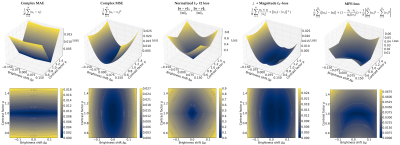 |
Screen Number: 1
1184. A
quest for deep learning MR image reconstruction loss functions
in k-space

S. Xu, W. Huang, K. Hammernik, M. Terpstra, D. Rueckert,
S. Gatidis, T. Kuestner
Medical Image and Data Analysis (MIDAS.lab), Department of Diagnostic and Interventional Radiology, University of Tuebingen, Tübingen, Germany
Impact: We propose a loss function that is more suitable
for k-space, taking into account its characteristics and
enhancing the accuracy of k-space regression. This loss
function can be applied to any tasks that require
calibration of k-space similarity.
|
| 08:17 |
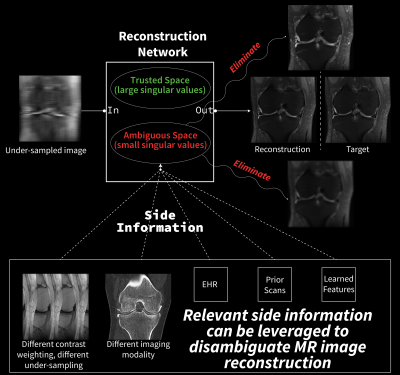 |
Screen Number: 2
1185. Resolving
ambiguous space: Leveraging side information with deep learning
to extend the limits of MR image reconstruction
A. Atalik, S. Chopra, D. Sodickson
New York University, New York, United States
Impact: By leveraging readily available sources of
information which may not generally be used for image
reconstruction, our approach reduces ambiguities, enabling
more accurate solutions even with highly-sparse
measurements.
|
| 08:19 |
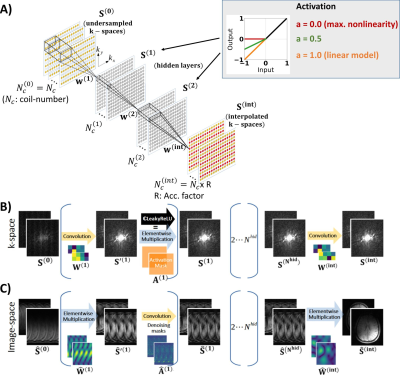 |
Screen Number: 3
1186. The
role of nonlinear activations in Fourier-domain neural networks:
Noise resilience, regularization, blurring and autocorrelation
artifact

P. Dawood, F. Breuer, I. Homolya, M. Gram, P. M. Jakob,
M. Zaiss, M. Blaimer
University Hospital Erlangen, Erlangen, Germany
Impact: This work illuminates the role of nonlinearity
in robust artificial neural networks for Fourier-domain
interpolation via activated convolution layers at limited
training data and shows possible implications of noise
resilience, image blurring and autocorrelation artifacts in
the image center.
|
| 08:21 |
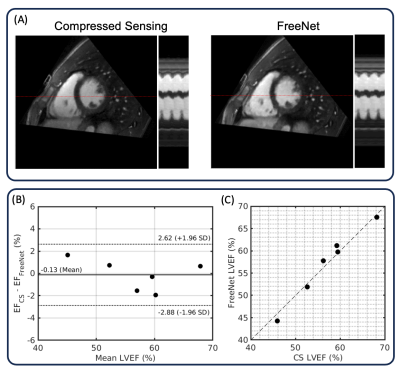 |
Screen Number: 4
1187. Efficient
deep-learning-based reconstruction of Ferumoxytol-enhanced
whole-heart 5D cardiac MRI
K. Borsos, A. Ogier, C. Roy, L. Romanin, M. Stuber, M. Prsa,
T. Küstner, J. Yerly
Lausanne University Hospital, Lausanne, Switzerland
Impact: FreeNet demonstrates potential for rapid inline
reconstruction of motion-resolved free-running CMR images
for the first time. Our work is a preliminary step towards
addressing current roadblocks, bringing “single-click”
free-breathing CMR to wider patient populations.
|
| 08:23 |
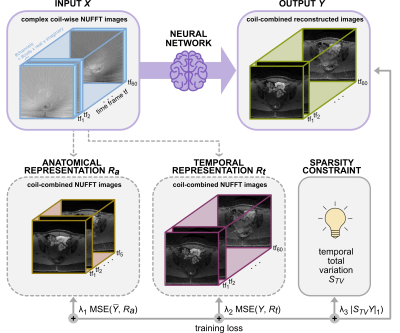 |
Screen Number: 5
1188. SELFIE:
SElf-supervised Learning for Fast dynamIc golden-anglE radial
MRI reconstruction with auto-extracted representations
M. Schellenberg, A. Mekhanik, V. Murray, R. Otazo
Memorial Sloan Kettering Cancer Center, New York, United States
Impact: SELFIE can achieve comparable performance to
supervised deep learning without the limitation of using a
compressed sensing reference, which is promising
for challenging clinical applications where acquiring a
reference is impractical.
|
| 08:25 |
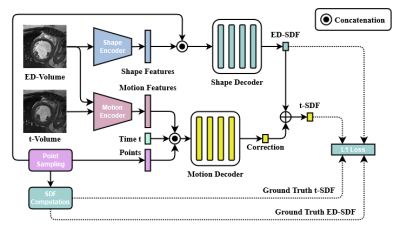 |
Screen Number: 6
1189. 4D
Cardiac Shape Reconstruction Using Image-Aided Neural Signed
Distance Correction Fields
Z. Zhang, Z. Liu, Z. Zhang, Z. Cui
ShanghaiTech University, Shanghai, China
Impact: The 4D cardiac shape sequence of a new patient
can be obtained using our method with less time required and
the best shape precision among the deep learning-based
methods so far.
|
| 08:27 |
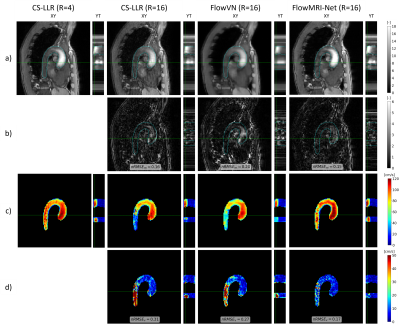 |
Screen Number: 7
1190. FlowMRI-Net:
A generalizable self-supervised physics-driven 4D Flow MRI
reconstruction network for aortic and cerebrovascular
applications
L. Jacobs, M. Piccirelli, V. Vishnevskiy, S. Kozerke
ETH and University Zurich, Zurich, Switzerland
Impact: FlowMRI-Net facilitates higher undersampling
factors than the current state-of-the-art for aortic and
cerebrovascular 4D flow MRI within clinically feasible
reconstruction times, improving clinical adaptation
particularly for cerebrovascular applications which are
otherwise too time-consuming.
|
| 08:29 |
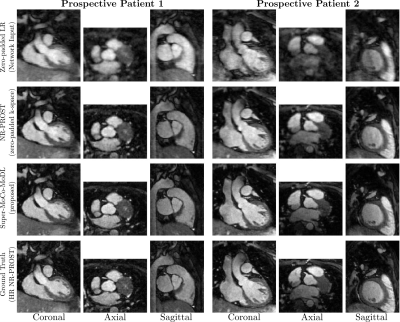 |
Screen Number: 8
1191. Two-minute
whole-heart MRI at 0.9 mm3 using a combined super-resolution and
motion-corrected undersampled deep-learning reconstruction
A. Phair, S. Littlewood, A. Fotaki, T. Fletcher, L. Felsner,
C. Prieto, R. Botnar
King's College London, London, United Kingdom
Impact: Extending Super-MoCo-MoDL for combined
super-resolution and undersampled reconstruction allows
sharp whole-heart 3D 0.9-mm3 isotropic-resolution
images to be obtained from low-resolution 2-minute scans
with 18-fold overall acceleration. This represents a
promising approach towards achieving fast high-resolution 3D
clinical CMR.
|
| 08:31 |
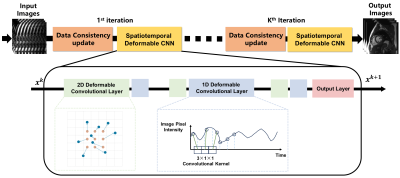 |
Screen Number: 9
1192. Spatiotemporal
Deformable Unrolling Networks for Cardiac Cine MR Reconstruction
Y. Zhu, J. Cheng, Z-X Cui, D. Gan, Y. Wang, J. Zeng, C.
Wang, D. Liang
University of Nottingham Ningbo China, Ningbo, China
Impact: The proposed method SDUN provides an effective
scheme for accurately capturing and learning complex cardiac
motions and deformations in cardiac cine MR reconstruction
through employing a deformable and adaptive CNN in proximal
network.
|
| 08:33 |
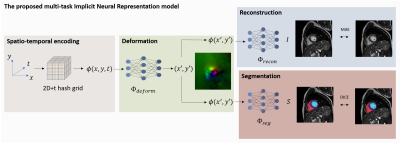 |
Screen Number: 10
1193. A
Multi-task Implicit Neural Representation Model for
Reconstruction, Motion Field Estimation, and Segmentation of
Cardiac Cine MRI
P. D. Negho, N. Vogt, P-A Vuissoz, J. Oster
Université de Lorraine, Nancy, France
Impact: The proposed model has the potential to speed up
cardiac function assessment, by diffusing a single manual
segmentation across successive temporal frames and slices,
while also providing motion information and offering the
possibility to reconstruct a super-resolved volume.
|
| 08:35 |
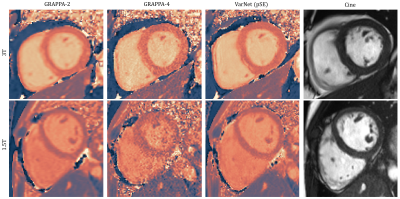 |
Screen Number: 11
1194. High
spatial resolution cardiac T1 mapping on 1.5T and 3T utilizing
deep learning-based image reconstruction
D. Amsel, J. Wetzl, D. Giese, R. Gebker, C. Tillmanns, A.
Lingg, P. Krumm, K. Chow, T. Küstner
University of Tuebingen, Tuebingen, Germany
Impact: The acquisition of higher spatial resolution T1
maps is achieved for both 1.5T and 3T systems. The proposed
method may improve the detection of small focal lesions
without increasing the required scan time or breath hold
duration.
|
| 08:37 |
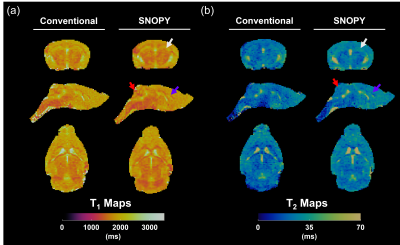 |
Screen Number: 12
1195. Machine
Learning-Optimized Sampling Enables High-Resolution 3D MR
Fingerprinting for Dynamic Quantification of Solute Transport in
CSF
Y. Zhu, G. Wang, J. Zhu, R. Boyacioglu, C. Flask, X. Yu
Case Western Reserve University, Cleveland, United States
Impact:
We present a novel method to leverage machine learning to improve sampling for MR fingerprinting. This method achieves simultaneous mapping of T1 and T2 in the whole mouse brain at 200-µm isotropic resolution in 4.3 min. |
| 08:39 |
 |
Screen Number: 13
1196. Enhance-then-Synthesize:
A Deep Learning Acceleration Pipeline for Spinal MRI, Reducing
Scan Time by 60%
Z. Zhang, J. Li, S. Jiang, Y. Xia, B. Jiang, L. Wang, L.
Xiang, L. Fan, S. Liu
Subtle Medical Inc., Shanghai, China
Impact: The DL-based enhance-then-synthesize pipeline
reduced the scanning time for spine MRI protocols up to 60%,
while delivering image quality comparable to or higher than
that of the standard scanning sequence. The generated
sequences proved to be viable alternatives for diagnosis.
|
| 08:41 |
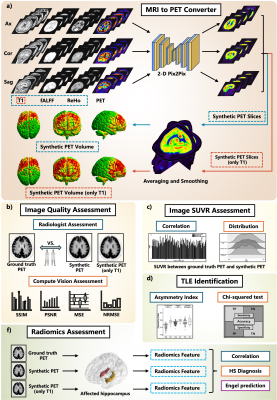 |
Screen Number: 14
1197. Synthetic
FDG PET from functional MRI for epilepsy: development and
external validation
C. Yao, J. Lu
Xuanwu Hospital Capital Medical University, Beijing, China
Impact:
|
| 08:43 |
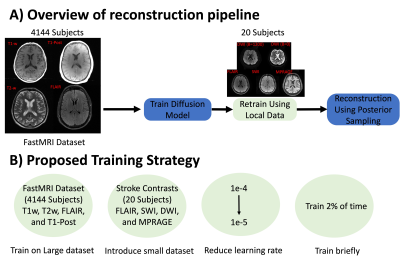 |
Screen Number: 15
1198. Training
Diffusion Probabilistic Models with Limited Data for Accelerated
MRI Reconstruction with Application to Stroke MRI
S. Kumar, Y. Arefeen, H. Saber, J. Tamir
The University of Texas at Austin, Austin, United States
Impact: Training diffusion probabilistic models with
limited data across various MRI contrasts holds substantial
potential to accelerate diverse MRI protocols, addressing a
critical unmet need in time-sensitive care scenarios, such
as stroke diagnosis.
|
| 08:45 |
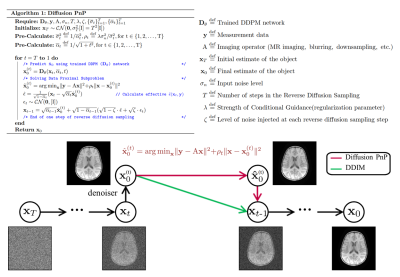 |
Screen Number: 16
1199. Universal
MR Image Restoration with Diffusion Models as Plug-and-Play
Priors
M. Mostapha, R. Miron, N. Janardhanan, M. Nadar, O. Darwish,
T. Huelnhagen, T. Würfl, H. Chandarana, D. Grodzki, R.
Schneider
Siemens Healthineers, Princeton, United States
Impact: The Proposed Diffusion PnP method enables fast
and accurate MRI reconstructions using a pre-trained
diffusion prior, without the need for fine-tuning or
retraining. This approach demonstrates strong potential for
diverse clinical applications in MRI.
|
| 08:47 |
 |
Screen Number: 17
1200. Harmonizer:
A Deep Learning Framework for Transforming Low-resolution
Clinical dMRI to Research-grade Quality
S. Cetin-Karayumak, R. Zurrin, W. Consagra, L. O'Donnell, Y.
Rathi
Harvard Medical School and Brigham and Women's Hospital, Somerville, United States
Impact: his work enhances clinical dMRI data for
multi-site neuroimaging studies, enabling high-quality,
research-compatible analyses. The Harmonizer algorithm opens
opportunities to study various disorders and pathologies
using clinical data, supporting detailed white matter
analyses and cross-site comparisons.
|
| 08:49 |
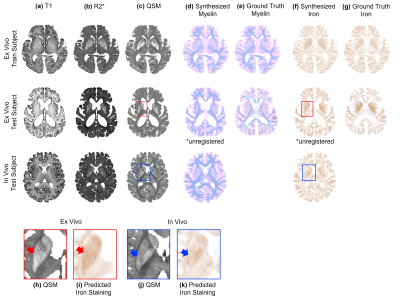 |
Screen Number: 18
1201. 7T
MRI-Synthesized Iron and Myelin Histology by Deep Learning
S. Pittayapong, S. Hametner, B. Bachrata, W. Bogner, R.
Höftberger, G. Grabner
Carinthia University of Applied Sciences, Klagenfurt, Austria
Impact: Our research shows that deep learning can
synthesize myelin and iron stainings from multi-contrast
MRI. This technique enhances understanding of brain
development, function, and diseases, promising advances in
medical imaging and histology.
|
| 08:51 |
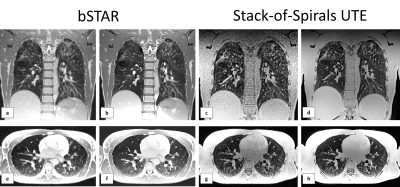 |
Screen Number: 19
1202. Super-Resolution
Image Enhancement for 3D Morphological Lung MRI with bSTAR at
0.55T
P. Panos, M. Pradella, K. Hostettler, O. Bieri, G. Bauman
University of Basel, Allschwil, Switzerland
Impact:
Due to physical and physiological challenges lung MRI is currently rarely used in clinical routine1. Our study demonstrates that a deep learning-based super-resolution image enhancement results in improved visualization of MRI lung morphology without introducing new anatomical structures. |
| 08:53 |
 |
Screen Number: 20
1203. Volumetric
Measurement Comparisons for Deep Learning Improved Ultra-Low
Field MRI
K. T. Islam, S. Zhong, P. Zakavi, H. Kavnoudias, S.
Farquharson, G. Durbridge, M. Barth, K. McMahon, P. Parizel,
A. Dwyer, G. Egan, M. Law, Z. Chen
Monash University, Clayton, Australia
Impact: SynthSR and LoHiResGAN were evaluated for their
unique approaches to enhancing ultra-low-field MRI images.
Their ability to improve volumetric accuracy highlights
their potential to support and expand access to high-quality
neuroimaging in settings with limited access to high-field
MRI.
|
| 08:55 |
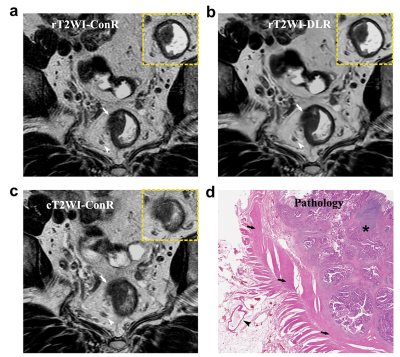 |
Screen Number: 21
1204. Deep
learning reconstruction based rapid T2-weighted imaging improved
the image quality for primary rectal cancer staging
L. Zhu, B. Shi, K. Wang, W. Feng, J. Dai, Y. Xia, H. Zhang
Ruijin Hospital, Shanghai Jiao Tong University of Medicine, Shanghai, China
Impact: The application of DLR would be beneficial for
rectum T2WI in terms of shorten scan time, improved tumor
boundary delineation, and better node characteristic
presentation which are important for primary rectal cancer
TN staging.
|
| 08:57 |
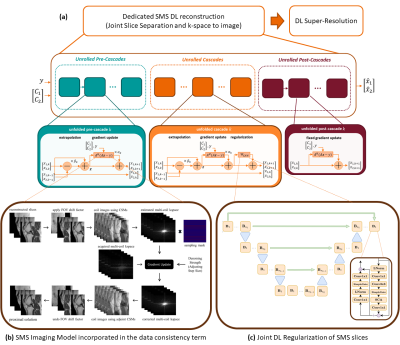 |
Screen Number: 22
1205. An
End-to-End Deep Learning Method for Reconstructing SMS-PI
Accelerated Musculoskeletal MRI
M. Mostapha, G. Koerzdoerfer, E. Raithel, N. Janardhanan, M.
Nadar, J. Fritz
Siemens Healthineers, Princeton , United States
Impact: Proposed methods facilitate the reconstruction
of 8-fold accelerated 2D-TSE-MR images across various
planes, contrasts, and MSK regions. Preliminary results
indicate the feasibility of DL reconstruction at 12-fold
acceleration, potentially allowing for significant speed-ups
compared to the slower standard of care.
|
| 08:59 |
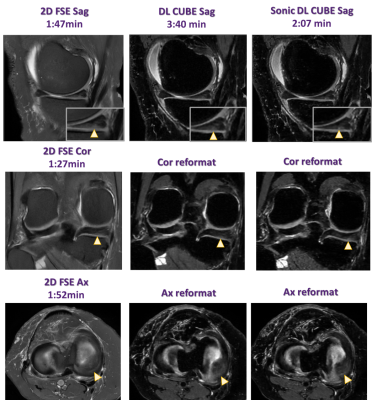 |
Screen Number: 23
1206. 2-Minute
3D FSE Knee MRI with 10-fold accelerated Sonic DL – Rapid
morphometric and qualitative assessment of Cartilage and
Meniscus
L. Carretero, B. Nunes, X. Zhu, E. Sanchez-Lacalle, D.
Sundaran, J. Dholakia, M. Fung, M. Padron
GE HealthCare, Madrid, Spain
Impact: Sonic DL technique enables 10-fold acceleration
of 3D FSE, delivering accurate cartilage and meniscus
morphometry. Its superior sharpness and lesion conspicuity
offer potential for routine clinical use, improving both
diagnostic confidence in 3D knee imaging and patient
throughput.
|
| 09:01 |
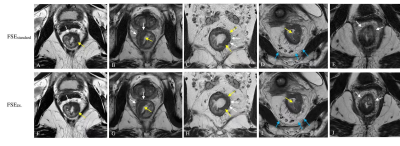 |
Screen Number: 24
1207. Improved
Image Quality, Diagnostic Performance, and Reading Efficiency
Based on Deep Learning-Reconstructed Accelerated Rectal MRI
W. Peng, S. wang, H. zhang
National Cancer Center/National Clinical Research Center for Cancer/Cancer Hospital, Beijing, China
Impact: This study offered a comprehensive and viable
perspective on the application of DLR in rectal MRI, which
facilitated improved image quality and reading efficiency,
while reducing acquisition time. Moreover, it enhanced the
accuracy of T-staging for junior radiologists.
|
| 09:03 |
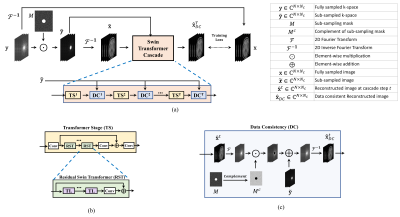 |
Screen Number: 25
1208. Micro
Transformer Cascades for Accelerated Multi-Coil MRI
Reconstruction with Overlapped SwinV2 Attention
T. Rahman, A. Bilgin, S. Cabrera
The University of Texas at El Paso, El Paso, United States
Impact: A smaller than conventional SwinV2-Micro
Transformer architecture is proposed to facilitate the
incorporation of powerful overlapped attention in
Transformer cascades for MRI reconstruction. This allows the
formation of longer cascades enabling higher reconstruction
quality at different acceleration factors.
|
The International Society for Magnetic Resonance in Medicine is accredited by the Accreditation Council for Continuing Medical Education to provide continuing medical education for physicians.